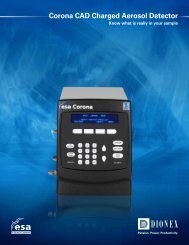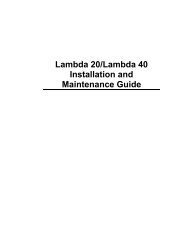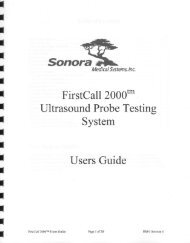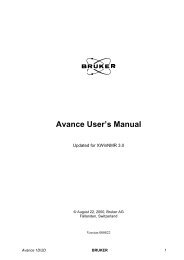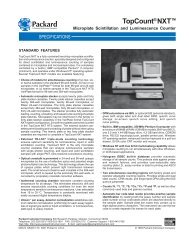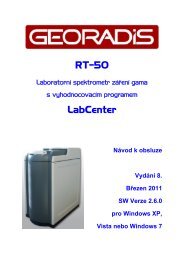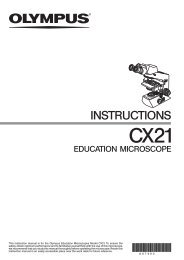HR-33T Dew Point Microvoltmeter Instruction/Service Manual ...
HR-33T Dew Point Microvoltmeter Instruction/Service Manual ...
HR-33T Dew Point Microvoltmeter Instruction/Service Manual ...
Create successful ePaper yourself
Turn your PDF publications into a flip-book with our unique Google optimized e-Paper software.
Heat transfer due to Peltier cooling and resistive heating is given by equation (4). Assuming an optimum valueof cooling current, the maximum temperature depression )T m will be obtained. If the cooling current is pulsedat a regular periodic rate, the actual cooling effect can be varied linearly between zero and maximum. The averagetemperature depression of the thermocouple junction will be given byThe cooling duty cycle, L, is a unitless number between 0 and 1 and is given by)T = L)T m (7)L =t a(8)t bwhere t a = “on” time of cooling current, and t b = period of electronic impulses. (In the <strong>HR</strong>-<strong>33T</strong>, L is restricted bydesign to the range from 0 to 0.95.)By controlling the value of L, we are able to adjust the magnitude of cooling to exactly balance heat inflow. Thenusing equations (5), (6), and (7), we havedW p=dW s=kLA v(9)dt dt P abThe psychrometer output is given by P ab )T. If we use this output to control the value of L such thatL =P ab )TA v(10)then the exact energy balance stated in (9) is satisfied. The instrument output is divided electronically by the valueof A v which is set into the instrument using the A v SET control.To illustrate, assume A v SET has been adjusted for a given thermocouple and the thermocouple has been placedin position for measurement. The junction temperature is lowered below the dew point for a short time tocondense water upon its surface (when in COOL, the cooling duty cycle is always at its maximum value, or 0.95).When the FUNCTION switch is rotated to DEW POINT, the cooling duty cycle immediately assumes a valuedictated by the microvoltmeter output such that heat is removed form the junction at the same rate it flows in fromthe surroundings. Since the junction temperature is below the dew point, water continues to condense, liberatingthe heat of condensation. As the temperature of the junction rises, )T becomes smaller as does the psychrometeroutput and the duty cycle L so that Peltier cooling continues to remove exactly the amount or heat flowing in fromthe surroundings. This automatic process continues until the junction temperature reaches the dew point andcondensation ceases. The system will then maintain the dew point temperature. However, if a change in ambienttemperature occurs, the meter output will be affected proportionately, since the initial ambient temperature isused as a reference point from which the dew point depression is measured.21







